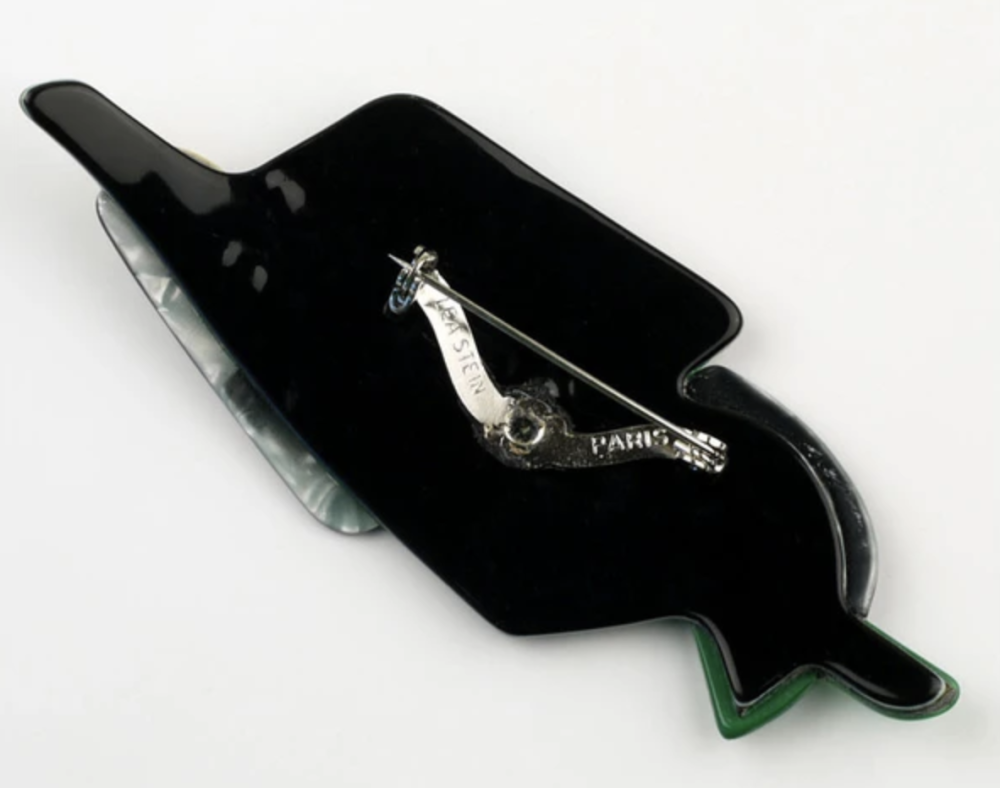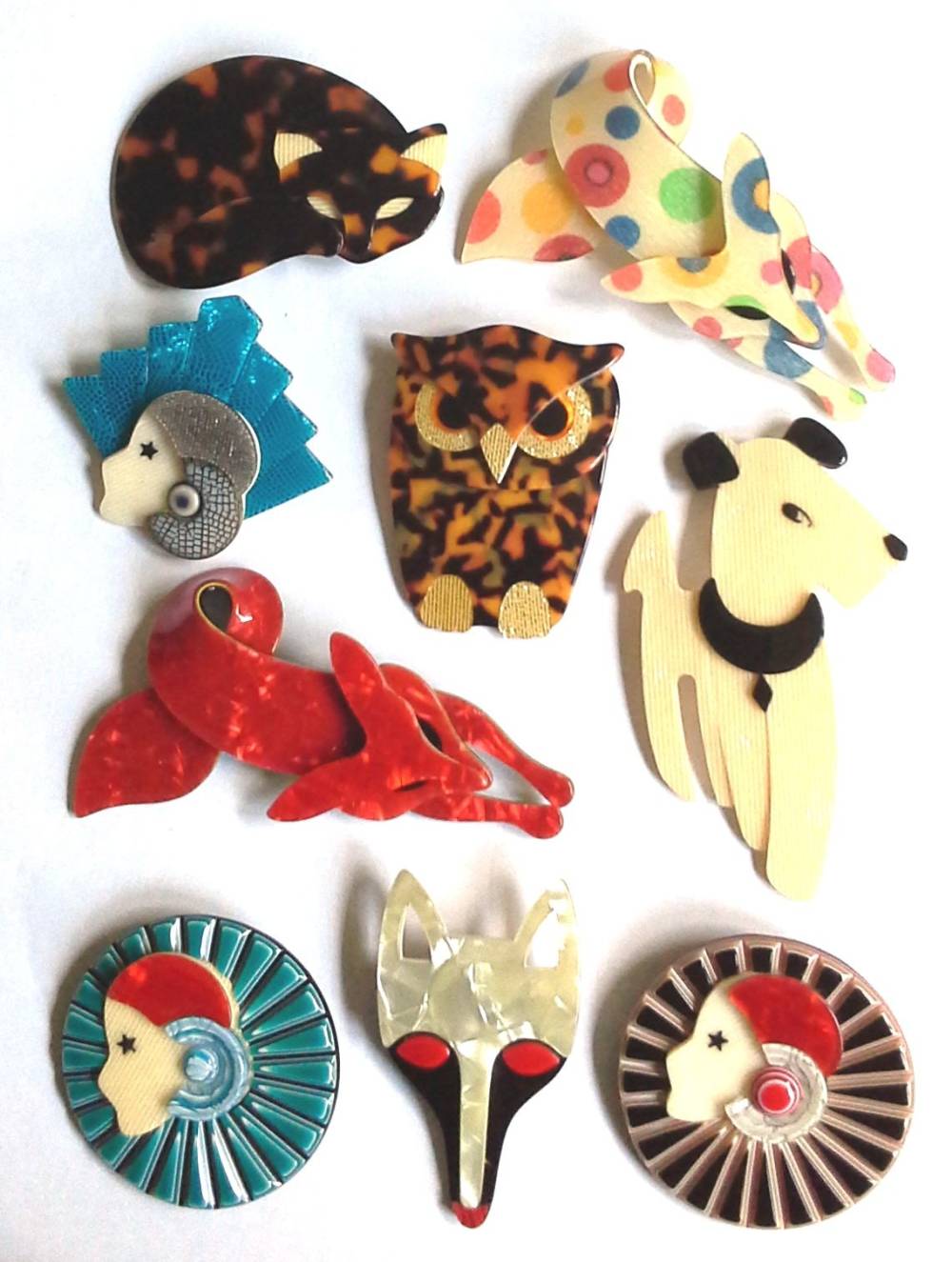
Léa Stein
Brooches
Léa Stein, one of the 20th century’s most notable and innovative jewelry designers, is a French artist and accessory maker known for her compressed plastic buttons, brooches, and bracelets. Born in 1936, Stein began her artistic training at a very young age. Though little is known about Léa Stein's childhood, the foundational skills she acquired throughout her teenage years led to a lifetime of opportunity in the arts, and one of the most notable collaborations of the latter 1900s.
Stein’s entrée into the fashion industry took place in 1957 when she began working as a textile designer in Paris. By 1965, Stein developed an interest in modern day plastics, much like fellow designers Paco Rabanne and Pierre Cardin, and began exploring the infinite creative possibilites afforded by this new-age material.
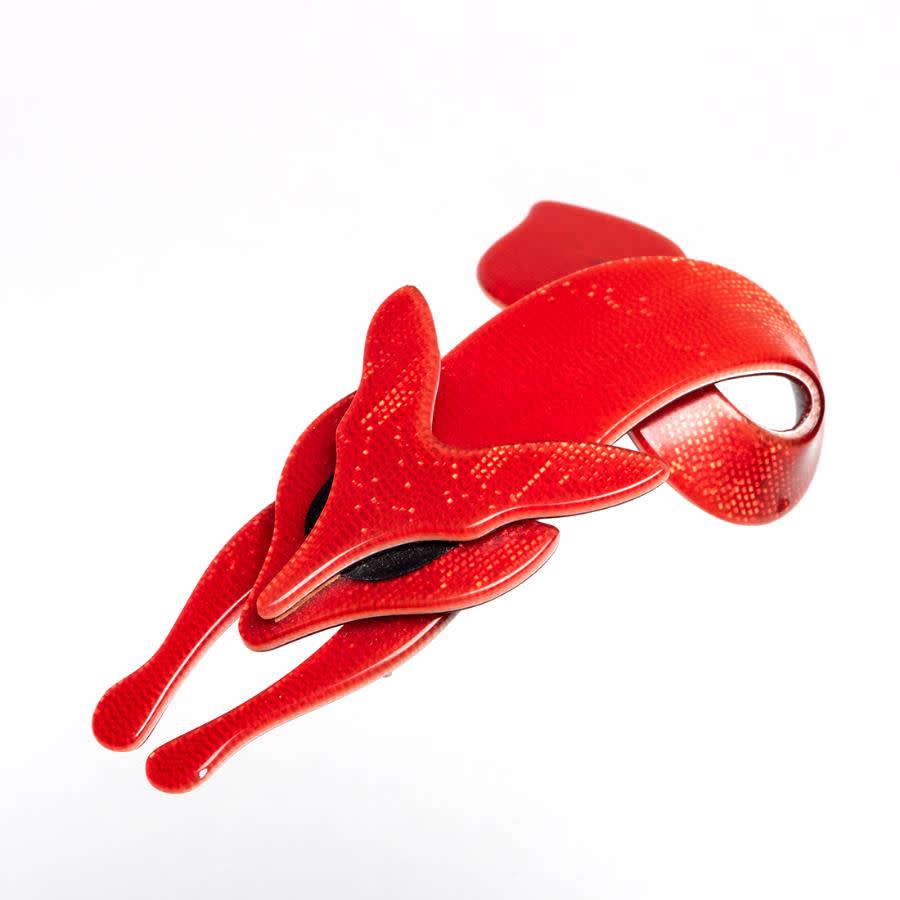
Léa Stein
Fox Brooch
Together with her husband, chemist Fernand Steinberger, Stein developed a process of layering thin sheets of cellulose acetate and laminating them to form a ‘multi-colored sandwich of plastic,’ giving rise to the exuberant, quirky designs that later defined her career. The ‘sandwich making’ process, which included several rounds of baking and cooling, could take as long as six months to complete, after which the resulting material could be cut into unique shapes and stacked upon one another.
Cellulose Acetate Sheet
Cellulose Acetate Sheets
Cellulose Acetate Sheet
Made up of as many as 50 layers of laminated cellulose acetate fused together through her husband's innovative process, the materials alone were modern day marvels. Furthermore, this proprietary technique gave Stein the creative opportunity to insert different metals and fabrics – such as brocades and lace – as well as colors and textures, between the various plastic sheets. The resulting materials were then used to create unique, never-before-seen compositions, particularly in the field of costume jewelry.
Léa Stein
Fairy Brooch, Intricate Details in Acetate
Léa Stein
Fairy Brooch, Intricate Details in Acetate
Léa Stein
Fairy Brooch, Intricate Details in Acetate
Léa Stein
Fairy Brooch, Intricate Details in Acetate
Before long Stein’s distinctive style caught the eye of fashion world titans and she was contracted by Coco Chanel to design jewelry for her eponymous French house. Beloved for their Art Deco tonality, Stein’s figurative brooches often featured animals, cars, everyday household items, random objects, and eventually, even celebrities.
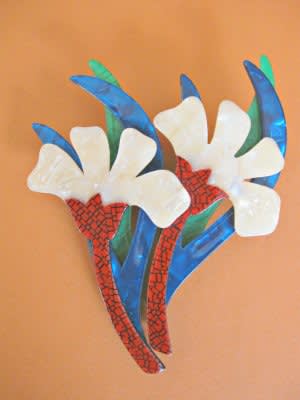
Léa Stein
Flower Brooch
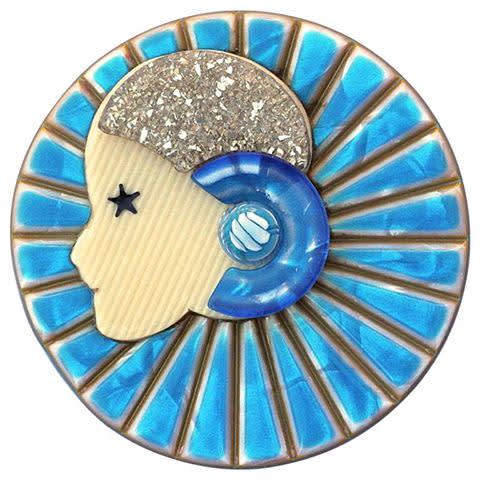
Léa Stein
Flapper Brooch

Léa Stein
Butterfly Brooch

Léa Stein
Saxophone Player Brooch

Léa Stein
Man in Uniform Brooch

Léa Stein
John Travolta Brooch
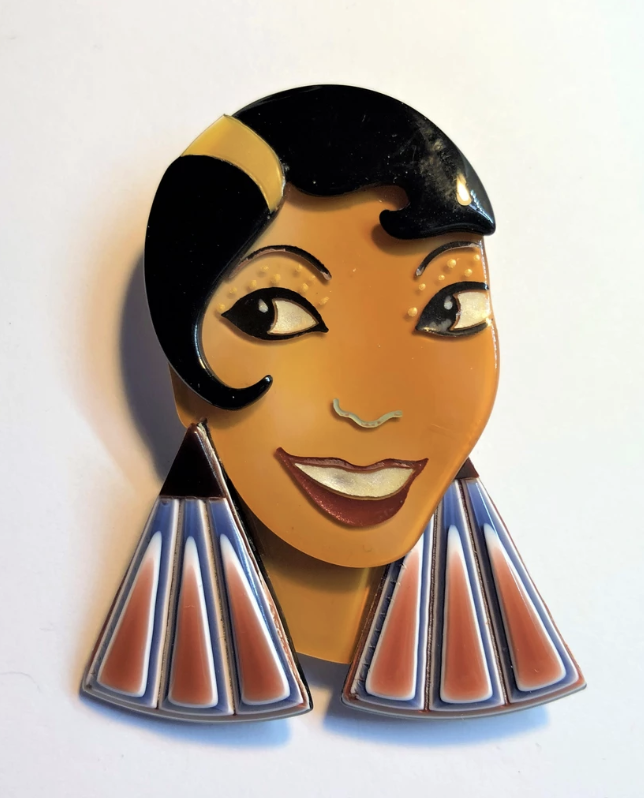
Léa Stein
Josephine Baker Brooch
After working with Chanel throughout the 1960s, Stein struck out on her own, founding ‘Léa Stein Paris’ in the early 1970s. Throughout the subsequent decades, Stein’s brooch designs became increasingly elaborate as she developed new methods and means of working with her chosen material, plastic. Before long, Léa Stein Paris expanded to include a multitude of wearable objects available in dozens of colors and motifs.
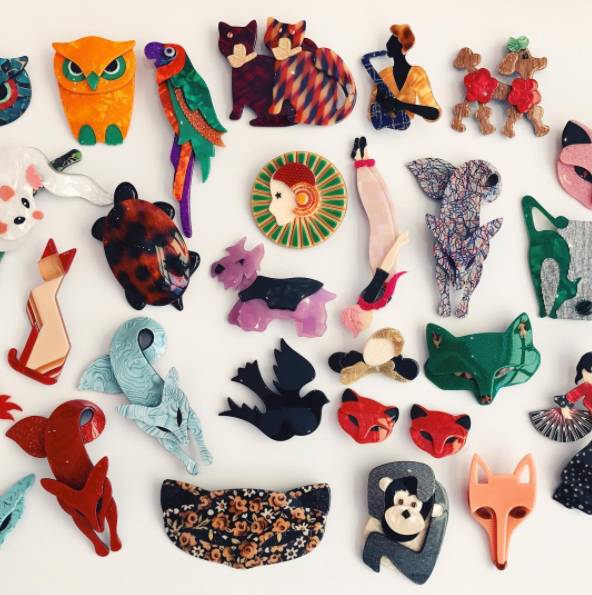
Léa Stein
Various Brooches
Stein’s sandwich-making technique afforded her the opportunity to create patterns and finishes that mimicked mother of pearl, glitter, and even snakeskin, providing tremendous flexibility and infinite possibilities when rendering both figurative and abstract designs. Though often described as whimsical and almost cartoon-like, her pieces attracted a slew of attention and landed in the collections of prominent clients and international institutions.

Léa Stein
Silhouette of a Lady Brooch
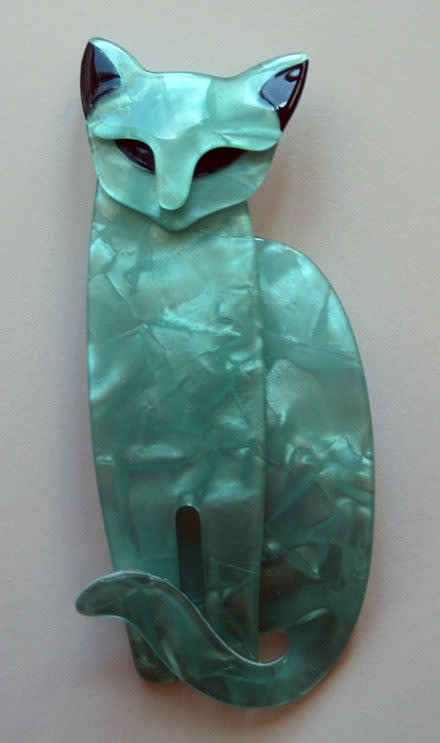
Léa Stein
Quarrelsome The Cat Brooch
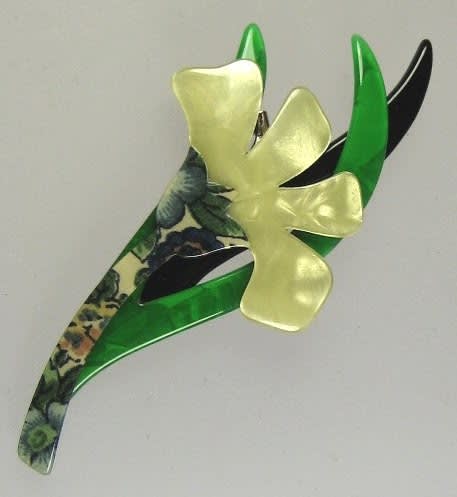
Léa Stein
Floral Brooch
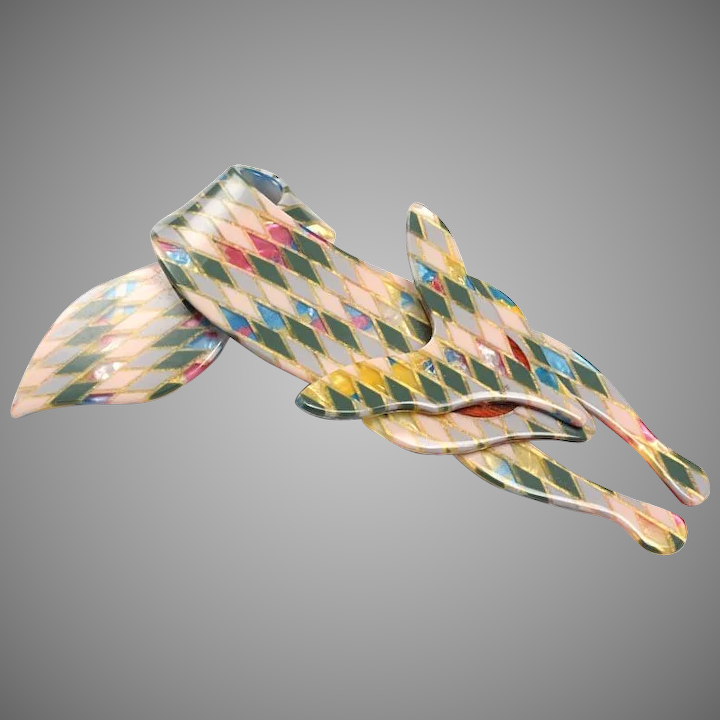
Léa Stein
Harlequin Fox Brooch
Best known for her multi-dimensional fox pin with a tail curled and wrapped under its body, other examples of Stein’s most notable designs include early serigraphy pins and buckles from the 1960s, as well as plastic and celluloid versions of Victorian “miniatures.”

Léa Stein
Tortoise Fox Brooch
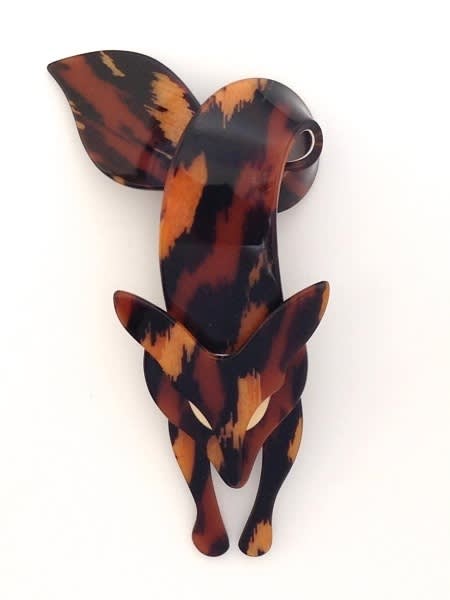
Léa Stein
Brown Fox Brooch
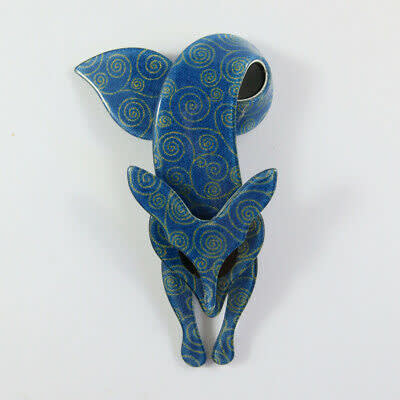
Léa Stein
Renard Fox Brooch
Due to the handmade nature of her work, no two pieces are identical, resulting in tremendous variation throughout the breadth of the extensive career. While the world has evolved and costume jewelry, let alone brooches, are not the wardrobe staples they once were, Stein is still working today, producing two to three new designs each year for those in the know to ‘ooh and aah’ over.
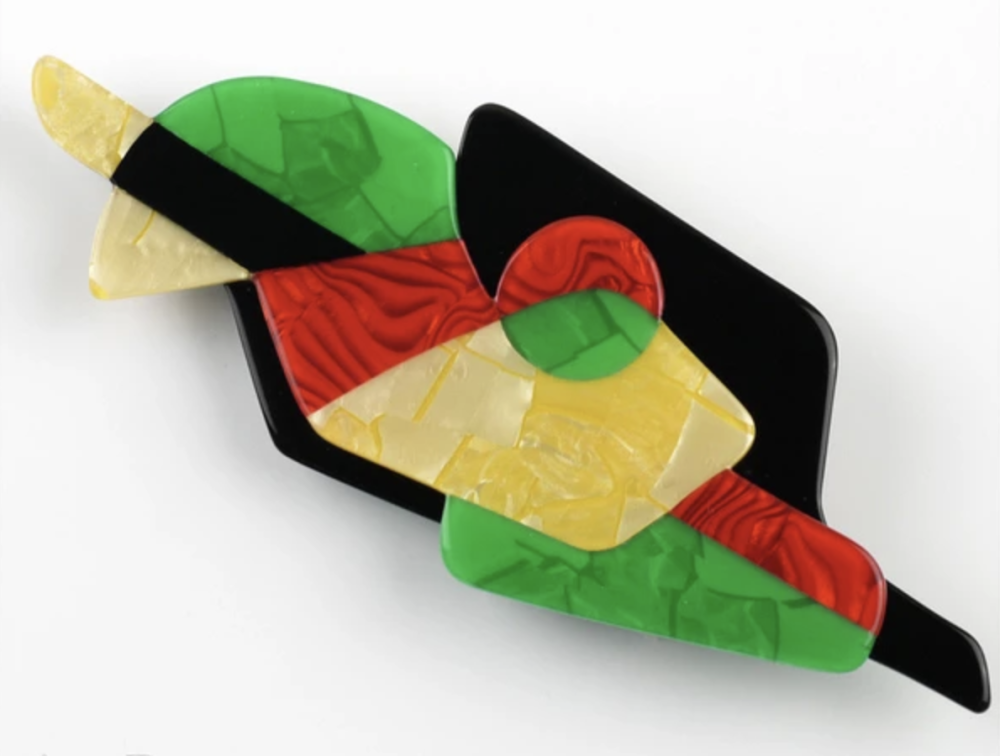
Léa Stein
Abstract Orphism Style Brooch
